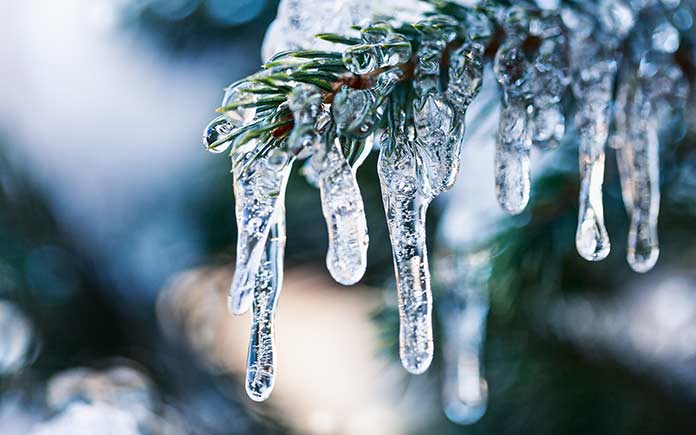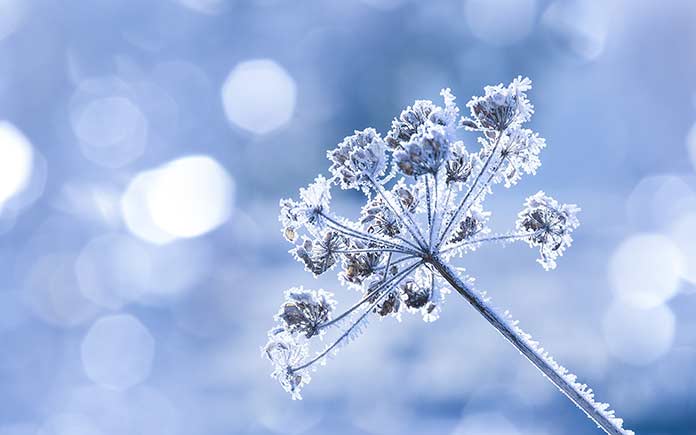
Gardeners often worry about the threat of freezing temperatures and frosts that can harm or even kill plants and damage crops.
Here’s what you need to know to protect tender plants from extreme winter weather.

What Is Extreme Cold Weather?
A freeze occurs when temperatures drop below 32° F or 0° C. When the water inside a plant freezes, it can cause the plant cells to burst, resulting in irreparable damage.
Here’s how different plants react to extreme winter weather:
- Tropical and frost-tender plants: Cannot survive extreme cold so they only grow naturally in warmer climates.
- Annual plants: Can’t survive extreme cold, but they disperse seeds to replenish their numbers once the weather warms.
- Root-hardy perennials: The foliage is killed back by a freeze, but the roots survive in a dormant state until spring.
- Fully hardy perennials, shrubs, and trees: Enter a dormant state, which decreases vulnerability to freezing temperatures by reducing sap content and conserving water. Spring blooms and early foliage may be damaged by late-spring freezes, but the plants themselves usually recover.

What Is Frost?
Frost occurs on clear, still nights. As the air temperature approaches freezing, the surface temperature of plants can dip below freezing, causing ice crystals to form in the same manner that dew forms on warmer nights.
Because temperatures vary just a few feet above the ground, frost can form when your thermometer reads above freezing. Cold weather may or may not be accompanied by frost.
Types of frost include:
- Hoarfrost — the familiar feathery white frost you see on chilly mornings. It results when water in the air is deposited directly in the form of ice crystals.
- Rime — happens when water is deposited in liquid form through dew or fog, which then freezes. Rime has a glazed appearance.
- Black frost — a term used when frost didn’t form, but plants were nonetheless damaged (and blackened) by freezing temperatures.



